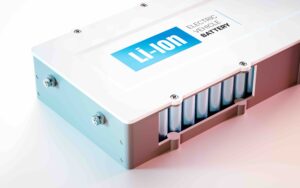APPLICATIONS OF TECHNOLOGY:
- Binder for silicon, tin, or graphite-based electrodes in Li-ion or solid state batteries
- Consumer electronics batteries
- Electric vehicle batteries
BENEFITS:
- Low cost starting materials
- Low cost production
- Conductive binder improves performance relative to conventional binder
BACKGROUND:
- Binders are important to the function of Li-ion and solid state batteries, stabilizing electrodes to ensure their continued function. Most polymers used as binders, however, are non-conducting, sacrificing charge transfer performance for electrode stability.
TECHNOLOGY OVERVIEW:
Berkeley Lab researchers have developed a dual charge conducting polymer that can be used with silicon (Si), tin (Sn), or graphite-based electrodes in lithium-ion batteries. Because this binder can effectively conduct both ions and electrons, cells made using this binder perform better than those made with conventional non-conducting polymer binders. This class of materials adheres strongly to Si, Sn, and graphite electrodes as well as copper (Cu) current collectors, adding the benefit of dual charge conductivity without sacrificing any other properties important to binder function. The starting materials and synthesis process are low cost, making this conductive polymer an effective and economical replacement for traditional polymer binders.
DEVELOPMENT STAGE: Performance validated in laboratory environment
PRINCIPAL INVESTIGATORS:
- Gao Liu
STATUS: Patent pending.
OPPORTUNITIES: Available for licensing or collaborative research.
